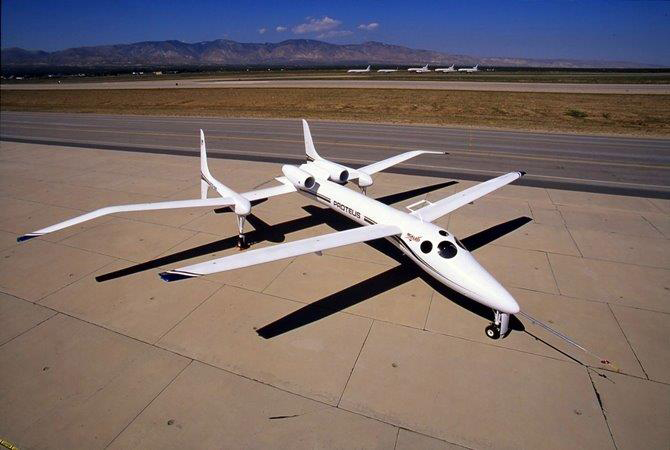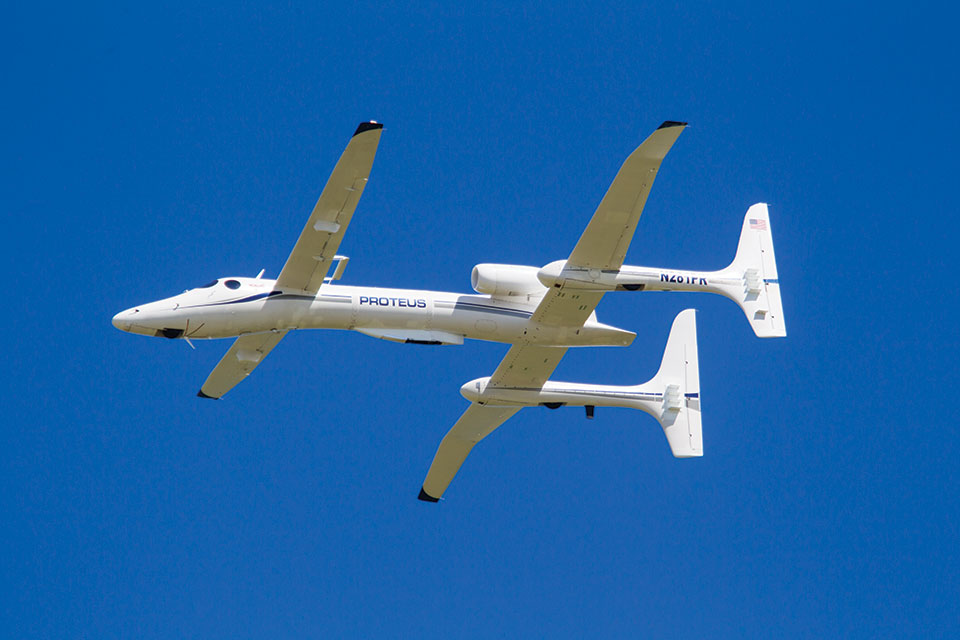Proteus: A Constantly Under-Development Workhorse
By Randy Dufault
July 24, 2017 - For a long time, the government and military were the only organizations with the wherewithal — and money — to conduct research at altitudes above where most airplanes stop climbing. All that changed in 1998 when a somewhat ungainly-looking bird named Proteus rolled out of Scaled Composites’ Mojave, California, hangars.
Since its inception, the craft has accumulated nearly 4,400 flight hours and recently surpassed the 1,000-flight mark, all while conducting high-altitude research for government and commercial customers across the globe. And it does so for a fraction of the operating costs of military designs, such as the U-2. In fact, Proteus will celebrate its 19th birthday (first-flight anniversary) on Wednesday while at EAA AirVenture Oshkosh 2017.
“It was built for 100 hours, maybe 150 hours, and it’s got [4,400] hours on it,” said Bob Withrow, Scaled’s vice president of engineering.
“It turns out that at Scaled, a lot of what we build are flying trucks,” he added. “It doesn’t always start that way, but with ARES, Firebird, Proteus, all those aircraft were started with a specific mission in mind, and after we had done the demonstration, it turns out that they are really good at doing some other things.”
“We just got done doing a major depot-level maintenance where we replaced the majority of the instrument panel, the cockpit transparencies, and [much of] the electrical system,” said Erik Hoffman, bids and proposals manager for Scaled’s Proteus Program.
John Barton, Proteus’ crew chief, added, “All in all, this is a workhorse. The bones of it are just rock solid, and we are hoping to get many, many more years out of it.”
The Scaled Model 281 was intended as a platform that could orbit a city at high altitude for long periods and act as a wireless broadband communications station. A fleet of 100 Proteuses, or Proteus-like aircraft, would have flown around the clock, serving each community. Although ground-based fiber-optic cables made this idea nearly obsolete in the United States, high-altitude wireless is still alive using other flying platforms, such as balloons and solar-powered drones.
“There is a good opportunity,” Bob said, when asked if plans exist for a newer version of the airplane. “We are in discussions with some people that are interested in building a bigger, newer version of Proteus.”
Bob added that one of the workloads under consideration for a new bird involves the original digital telecommunications idea.
“In many ways, like a lot of what Burt [Rutan] did, it was an idea way before its time,” he said.
Proteus carries payloads inside the airplane, outside, or completely integrated into newly manufactured airframe components.
“You really decouple the payload from the plane,” Erik said. “You can be flying one customer’s research … and in the background assembling and creating stuff so you don’t have to wait years and years to get on the airplane.”
John added, “Once we understand what we are doing with [a payload], and the envelopes involved, the time to switch between payloads is a matter of days, rather than a long cycle where you might only fly two or three customers a year.”
Proteus is on display at Boeing Plaza for the first time since 1999. Scaled Composites is presenting a number of sessions about the program at its base in Forum Building 7.


